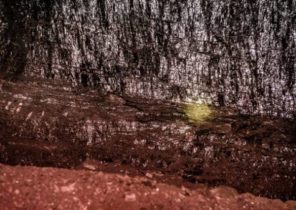
Human needs are constantly growing, and the amount of resources remains limited. One possibility in this situation is the intensive development of technologies and creation of new materials, in particular hybrid. About what they are, how to create and what prospects open, said a leading expert in the field of creation of hybrid materials, honorary doctor of the Russian Academy of Sciences, head of laboratory “Hybrid nanostructured materials” nitu “MISIS” (Moscow, Russia), Professor, Department of materials science University. Monash (Melbourne, Australia) Yuri Estrin.
Al Hayat: please Explain what a “hybrid” in materials science and why create them?
Yuri Estrin: today Used traditional materials have a limit in their properties — they may not have the strength or ductility above a certain limit, so the science moves in the direction of creating “hybrids” — materials consisting of several, often quite heterogeneous components, which provide a combination of desired properties in the newly created material. An important role is played by not only the chemical composition of the individual components, but their microstructure and relative position, that is, the internal architecture of a hybrid. It gives the ability to control the properties of the resulting material, and the variety of possible geometries opens up a whole range of additional properties.
— What are the key ways to create hybrids?
— There are many ways to create hybrid materials, but in our research we use two main methods. The first is severe plastic deformation. Joint deformation in the hundreds, sometimes thousands of percent, simultaneously subjected to two or more materials. The billet material is repeatedly forced through a die with a given shape of the channels. The process of intensive deformation is reminiscent of a piece of meat passed through a meat grinder. The billet retains its shape, but she felt a giant warp and the inside has undergone incredible changes. The internal structure of the material are crushed to the nano range.
If the polycrystalline material has a grain microstructure with a grain size of, say, tens or hundreds of microns, resulting in deformation of the grain are broken down into smaller sub-micron. Their average size can be of the order of hundreds of nanometers, i.e. one tenth of a micron. This procedure allows, on the one hand, to intended internal architecture of a hybrid, and with another — to achieve nanostructuring, improves the mechanical characteristics and change the physical properties of the hybrid. Severe plastic deformation increases the strength of pure metals is alloys by 20-30%.
The second way is using the method of topological samosatene. We can say that here we adhere to the principle of “divide and conquer” — divide solid material into segments, to “Lord it” over their properties. The original material is segmented, i.e. divided into elementary blocks, then recreates the structure of the desired material. The elements of the structure samsarajade — or in other words, samosogrevaetsya — due to the geometry and location relative to each other. For example, in some embodiments, such structures each block supports six neighboring connecting elements or the bonding mass is not needed. Three adjacent units prevent the movement of the Central unit in one direction, three the opposite. At the edges the situation is more complicated — neighbors who would not allow units to move there, so the structure need to limit, for example a frame, or other ways. My colleagues from Australia found a number of geometric shapes, allowing to implement the principle of topological samosatene. In such structures it is possible to combine any, even extremely heterogeneous materials, thus giving the hybrid a necessary multifunctionality. Chemically it can be any content, even hollow blocks. The size of the blocks, depending on the applications varies from a few millimeters to several meters.
— In contact with stone glass from the point of impact and distributes the crack as if to throw a stone in your material, the damage will remain local, not spread to the neighboring areas?
Yes, it’s true. Main crack passes through the plate, composed of topological closecalendar blocks. She is interrupted at the interfaces between neighboring blocks.
If the blocks to destroy one by one, randomly, the structure will maintain its integrity and will not collapse until it is destroyed about 25 % of the blocks. At the first damage on monolithic plate would immediately went crack and she would have collapsed. This unique immunity to local damage — a remarkable property of topologically closecalendar structures that fundamentally distinguish them from monolithic.
— It turns out that due to this property it is much easier to repair, replacing the small damaged section?
— Not exactly, the repair is more complicated. You can put a “patch” on the damaged segment, but to pull the broken segment and insert instead a new one is impossible. In order to replace a damaged unit, you need to get close to him, moving from the edge of the Assembly, you have to disassemble part of the composite plate.
Since hybrid nanostructures do not break even from a few local damage, it turns out that they would be very well suited for long distance space travel or building bases on other planets? What kind of properties are these materials?
— Hybrid structure of closecalendar blocks — indeed, a great engineering solution for applications in space technology. They can be used for cladding space craft or in the construction of buildings on the moon or Mars. For structures of topological samosatenus blocks do not require mortar, therefore, in an anhydrous environment this technology opens up broad prospects. If we talk about the moon, the buildings can be built directly from the regolith — lunar soil, located on the ee surface. Of course, it is necessary to develop technology for the sintering of soil and learn to shape it into blocks with the desired geometry. The building of these blocks is not afraid of even a meteor shower.
The hybrid structure is segmented into individual elements, a lot of unique features. Segmented objects absorb sound better and more efficiently dissipate impact energy than solid objects made of the same material. Experiments with ceramic materials has shown that if you pass the sound through solid material, the sound absorption coefficient is, say, 5-10%, if the same material is segmented into topological samosatene blocks, the absorption coefficient will be equal to 60 %. The increase in this indicator achieved only at the expense of segmentation into blocks with a special geometry. If work on material — to choose the right and make it porous, it is possible to obtain the absorption coefficient close to 100%. Immediately suggests the use of such material for sound barriers on highways, sound insulation in buildings. The application of the principle of topological samosatene also opens up extremely interesting perspectives for the construction in earthquake-prone regions.
— In what other areas are applied hybrid materials? What exactly are you working on at the moment?
— Hybrid materials is mainly structural materials that have the potential to be in demand in construction, automotive industry, aviation industry, space technology and so on. Wherever we are talking about any mobile objects for which you want more light, but at the same time more resistant to the destruction of the material. However, industrial firms have not yet really in a hurry to implement them. Here it is necessary to communicate to industrial partners and investors of the advantages of the new design principles and manufacturing of hybrid materials, and in this we see one of the important tasks of our laboratory.
We develop methods of intensive plastic deformation is very promising for the creation of biodegradable bone implants and stents based on both traditional and hybrid materials.
After the implant has served its purpose, as a rule, requires their surgical removal. However, if the implants themselves will dissolve during the tissue regeneration, repeated surgical intervention is not required. In the laboratory experimental work on the development of biodegradable materials for medical applications based on magnesium alloys and polymers.
Severe plastic deformation and the resulting nanostructuring of the material also opens up new opportunities for the development of hydrogen energy. Now hydrogen is considered as a possible alternative to hydrocarbon raw materials, so materials can accumulate and store, in the future, can be used in batteries for new energy. Nanostructured hybrid materials can improve the ability of metal or alloy store hydrogen, to accelerate its impact and make it possible to process at lower temperatures.
— Your research involve the use as components in hybrid materials having characteristics that allow a controlled way to change the material properties under external actions. Does this mean that a ball of similar material at different temperatures can be first soccer ball, and then cannon ball?
We passed through hybrid structures of niti that can be pulled to different degrees, and the resulting flexible structure, composed of blocks of a very hard material. This technology allows you to do a hard material supple and flexible. If you make the filament of a material with shape memory effect of pre-deforming the material, and then heating it, for example by passing electric current through it, then we will force them to return to the original form. In this way we can change the tension of the filaments and thereby control the Flexural stiffness of our structure.
If we are talking about polymers, you can add threads, and entire elements with shape memory effect. On this plate to blow hot air, and she will be tough. Here again we can draw an analogy with a ball that turns into a Cannonball, but the transformation happens only once and only in one direction.
— Some developments and scientific discoveries don’t just add to our lives, and in fact completely change the world, for example, antibiotics or jet engine. Is there any science in this task, which would change the world?
— A revolution in materials science has made the creation of materials for smart clothing. Smart clothing is clothing that combines heat, radiation, shockproof protection with elements of electronics. An essential component of this concept is the property of self-healing material — that is, the ability of a material to self-repair local damage. Such clothing like a second skin, but in many ways surpasses it. In materials science there is a whole direction for the development of such materials. It is now very actively developed.
If we talk about a comprehensive “overarching objective” in science, I’m afraid that it does not exist.
The materials serves a lot of different engineering fields. For each of them need their solutions and materials. In specialized journals on materials science, and in popular scientific journals, contains a lot of interesting ideas, which sometimes take your breath away. But I think that the most impressive breakthroughs, the results of which could find practical application, is expected in the area of hybrid materials with special internal architecture at different scale levels.







